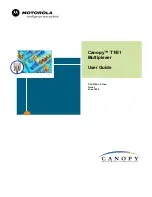
ADM-870 05/23/08
36
12.0 SPECIAL BALANCING PROCEDURES
12.1 PROPORTIONAL BALANCING
Backpressure compensated readings should be taken during the preliminary survey of the entire system with
all dampers fully open, and also during the final readings after balancing is complete. Nonbackpressure
compensated readings require less time and are usually adequate for the proportional balancing of outlets (see
Section 5.4 SPEED-READ).
12.2 LARGE RETURN AIR GRILLES
Fan systems such as package air conditioning units or fan coil units may have only one main return air inlet.
This is common in residential air conditioning systems ranging from two tons to 7 ½ tons of cooling capacity.
The rated air delivery range is 800 to 3000 cfm. The FlowHood may be used to measure the return air flow if
special attention is paid to avoiding excessive restriction of the air flow. The flow restriction is kept to a
minimum by taking readings in two or more segments. For instance, if the return air grille is 30" x 24" and rated
flow is 2400 cfm, read each half of the grille (15" x 24") using backpressure compensation. The sum of the
backpressure compensated readings taken on each half is the total air flow through the return air grille. Keep
in mind that this flow measurement represents only the flow at the return air grille. The total air flow at the fan
includes return air duct leakage and possible outside air intake.
The reading for each portion of the grille would be even less restrictive and thereby more accurate if the 1'x 4'
top were used on the FlowHood. The air flow could then be measured in three segments along the 30"
dimension, with the excess length of the 48" top overlapping onto the ceiling. The 30" dimension of the grille
could be broken into 9", 12" and 9" segments using the 12" width of the 1'x 4' FlowHood top. This procedure
is also useable on large supply or discharge grilles and diffusers.
12.3 KITCHEN EXHAUST HOODS
Exhaust fan delivery of room temperature air in kitchens is reduced substantially when the cooking surfaces,
ovens, broilers and fryers are heated to normal working temperatures. This is caused by the significant
reduction in air density which occurs during the change from cool set-up to heated working conditions.
A fan which was set to deliver 5000 cfm at 75
/
F intake air will actually deliver only about 4610 cfm of the 75
/
F room air when the air is heated to 140
/
F in the exhaust hood. It is very important that a kitchen system
balance be confirmed by measurements for air flow, room pressure, and actual makeup air, while the cooking
devices are at their normal working temperatures.
12.3.1 RANGE EXHAUST FILTERS AND GREASE EXTRACTORS
IMPORTANT: See Section 6.1 VELOCITY CORRECTION FACTORS
The VelGrid may be used to measure the range exhaust washable filter and grease extractor face velocities
as described below. NOTE: The VelGrid is
not
designed to be used without the standoffs.
Begin by determining the gross face area of each filter or grease extractor to be tested. In this case, the
nominal filter size marked on the filter should be used to calculate the full gross face area. For example, a 20"
x 25" filter is 500 inches square overall (or 3.47 feet square overall). Measure the face velocity of each filter
or extractor with the VelGrid positioned at the center of the filter face only. The 1.5" standoffs must be pressed
against the face of the filter to hold the VelGrid 1.5" from the filter face. Determine the Kv factor for this type
of filter as described in Section 6.1 VELOCITY CORRECTION FACTORS. Multiply the center face velocity
by the calculated Kv factor to obtain the corrected face velocity for that filter or extractor. The air flow in cfm
or l/s is calculated by multiplying the gross face area of the filter or extractor by the
corrected
face velocity.
Most commercial grade exhaust hoods leak to some degree between the filters and along the filter support
tracks. The sum of the filter air flows obtained in the manner described above is generally sufficiently accurate
for properly constructed kitchen exhaust hoods. Hoods which have been installed with excessive clearances
and leakage will require correction for leakage.
12.4 CONSTANT VOLUME CONTROLLERS
The backpressure compensation process requires special attention when used to measure air flow at
individually controlled constant volume air terminals. The nonbackpressure compensated and the
backpressure compensated air flow readings should be essentially equal for fast acting constant volume air
terminals. The controller responds to the additional backpressure and maintains the preset air flow. If the
controller is slow acting, the FlowHood must be held in place long enough for the controller to reattain the set
point.
Master and slave, volume controlled outlets often do not interact favorably with the FlowHood backpressure
compensation function. Air delivery measurement for this type system should be performed using a
nonbackpressure compensated measurement.
Summary of Contents for Airdata ADM-870
Page 25: ...ADM 870 05 23 08 21 6 4 VELGRID ASSEMBLY...
Page 34: ...ADM 870 05 23 08 30 FIGURE 10 2 FLOWHOOD IN CASE FIGURE 10 1 FRAME STORAGE...
Page 35: ...ADM 870 05 23 08 31 FIGURE 10 3 FLOWHOOD ASSEMBLY...
Page 37: ...ADM 870 05 23 08 33 FIGURE 10 7 1X5 FRAME ASSEMBLY FIGURE 10 8 3X3 FRAME ASSEMBLY...
















































